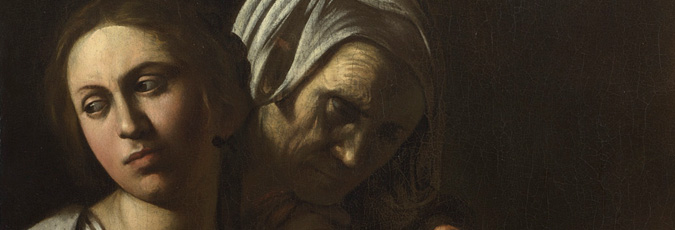Admirers and imitators
Artists travelled from all over Italy to admire Caravaggio’s paintings in Rome, both during his lifetime and in the decades immediately following his death in 1610. The increasing demand for paintings by Caravaggio and his followers contributed to the rise of the Caravaggesque movement: artists who produced works in a naturalistic vein, with dramatic chiaroscuro, often treating subjects that Caravaggio himself had made popular.
Very few Caravaggesque painters knew Caravaggio personally, but most had direct knowledge of his art. Artemisia Gentileschi (1593–1656) probably only met him as a girl, through his association with her father Orazio, but Caravaggio’s paintings had a lasting impact on her work.
Many artists assimilated Caravaggio’s style, if only temporarily, and were employed by the same patrons. Cardinal Scipione Borghese (1577–1633), a great admirer and keen collector of Caravaggio’s works, also employed Guido Reni and later commissioned Giovanni Francesco Guerrieri (1589–1657) to decorate his palace. Other artists borrowed iconographical motifs from Caravaggio, and the profusion of these greatly contributed to Caravaggio’s posthumous reputation.

